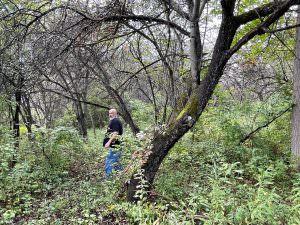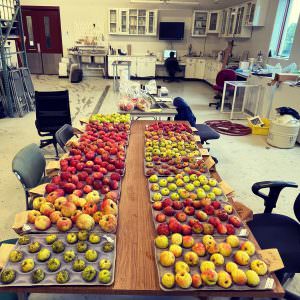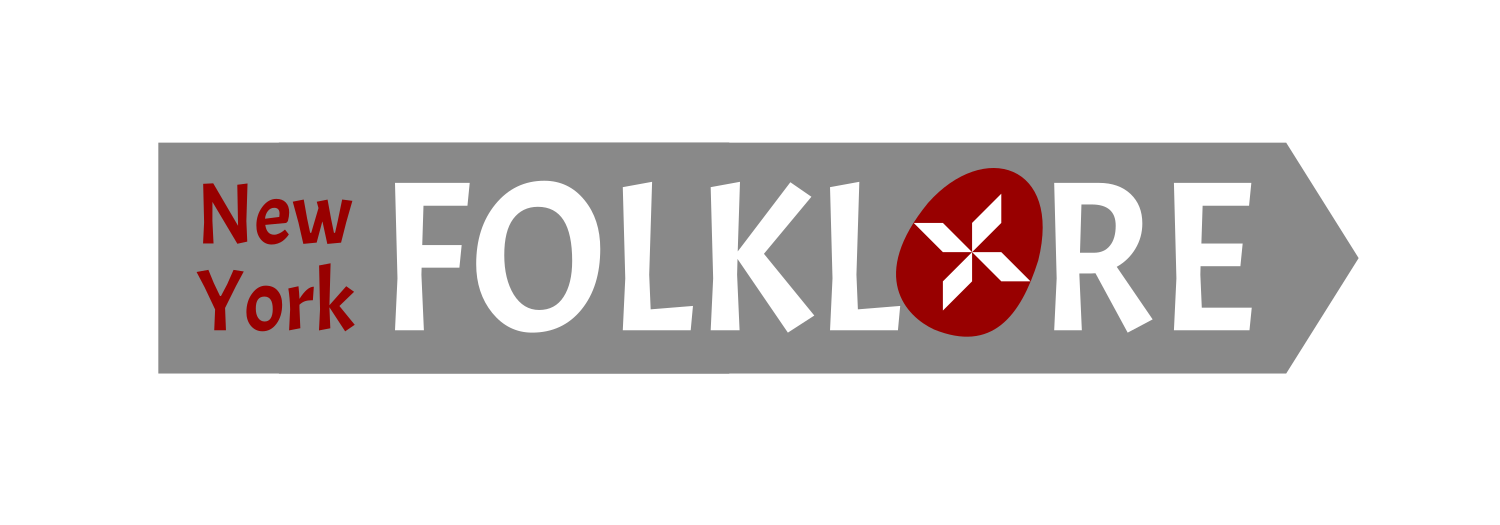This From the Field Feature is courtesy of Dr. Maria Kennedy, a folklorist and faculty member at Rutgers University. She is a member of the New York Folklore board. You can follow her Foraged Fruit project at https://foragedfruitproject.com or on Instagram @ciderwithmaria
Some folklorists collect songs. Some collect stories. Some collect quilts or pottery. Our discipline has been defined from its beginning by the fieldwork practice of collecting examples of the artistic expressions that characterize everyday life.
I collect apples. While apples might not seem like an obvious object or art or culture, plants are highly influenced by the aesthetic, culinary, and practical choices of people. My research project with my colleague Dr. Gregory Peck, a plant scientist at Cornell University, seeks to understand a dynamic area of plant-human interactions on the fringe of agriculture. We are looking for foraged fruit.

Walking through an apple forest near Mexico, New York at Peaceful Acres Farm with owner Dan Shutt
This summer, I spent a month on the road, travelling all around New York State to meet with foragers during the month of August, before the beginning of harvest season. I interviewed them about their foraging practice, and then, if possible, would go out to see the spots where their wild apple trees grew. Foragers have favorite trees, and it is these ones we are searching for. Good things to bring for apple fieldwork: rubber boots, a raincoat, a hat, and a willingness to go bushwacking. I’ve driven in pickup trucks, in gator utility vehicles. I’ve tromped through weeds and meadow as high as my head. To get to the wild trees is often an encounter with succession forests rather than farm fields.
There are many abandoned orchards in the Northeast on land that was formerly farmed, but which has become economically marginal. People still harvest some of these abandoned and wild orchards. And increasingly, this foraged fruit has become a small but salient part of the commercial hard cider industry.
Our research project asks questions like: Does the unique genetic profile of the wild apples provide potential new alternatives to commercially grown apples, with increased disease resistance and enhanced fermenting qualities?
The trees that survive have selected themselves. And the ones that end up in cider have been selected by cider makers. To me, each of these apples represents a unique artifact of these ecologies of selection: some of them biological and environmental, and some of them culinary and occupational. They are intensely personal and local. Each represents relationships to land, property, and knowledge of seasonal cycles of harvest.

Fruit samples in the lab ready for analysis
Now that it is harvest time, I’m going back to revisit the people I interviewed earlier. Their predictions about harvest are now immediate, and profoundly influenced by the weather. A heat wave can accelerate the harvest date. The rain might delay it. But when the fruit is ready, it is ready, and you have to get to it quickly, before the deer or the mice do, or before it turns to a rotting but fragrant mush on the ground.
When I collect the fruit, it gets meticulously labeled. I give each batch ID numbers and enter all the collection data into my data base. Next I will pass the fruit on to my colleague Greg’s lab team, and from there the processes of
lab science will begin to reveal the essential properties of the plant itself, such as the sugars, acids, and tannins. We will send leaf samples for genetic analysis. I return to my fieldnotes, my interviews, and my database to fill out the story of each apple specimen that is now on a journey through the lab.
As a folklorist, I get to chart the story of the fruit – how it relates to complex webs of culture and nature. And as I look at my collection of apples, with the different colors and flavors and aromas lined up next to each other, I see the apple as beautiful as any work of art, and a foraged apple as one particularly influenced by the hands of people working closely with their natural environments.
Are you a New York State folklorist or community scholar? We would love to publish your “From the Field.” Email Anne, arappaport@nyfolklore.org to be featured.
